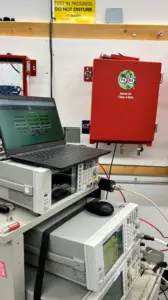Understanding Bi-Directional Amplifiers (BDAs) and Their Role in Enhanced Communication
In today’s fast-paced world, effective and reliable communication systems are essential. Technologies that ensure clear and consistent signal transmission are critical, especially in challenging environments. Bi-Directional Amplifiers (BDA) stand out as a pivotal technology, crucial in bolstering signal strength and ensuring vital communications reach their destination without disruption.
This article will explore the technical aspects of BDAs, highlighting their functionality, role, design, and the expertise TX RX brings to this essential component of modern communication systems.
Technical Design and Sophistication of Bi-Directional Amplifiers
Bi-Directional Amplifiers (BDAs) are advanced RF (Radio Frequency) devices engineered to amplify signals in transmitting and receiving directions, acting as signal boosters. They play a crucial role in environments where radio signal penetration is challenged by physical barriers such as concrete, metal, and low-E glass, as well as by below-ground structures and RF interference.
A complete BDA system typically consists of several components:
• Donor Antenna System: Installed on the building’s roof, this component points towards the public safety radio repeater site and is characterized by high gain and directivity. It does not require a direct line of sight.
• Main Off-Air Unit (BDA): The core unit that amplifies signals.
• Fiber Optic Master Unit (OMU) and Remote Unit (ORU): These units work in conjunction with the main BDA to provide coverage over large or complex building structures using fiber optic cabling.
• Annunciator(s): These components are used for system alerts and notifications.
• Passive DAS or Antenna Network: This network, often consisting of coaxial cables and other RF components, distributes the amplified signal within the structure.
• Battery Backup and Network Management System: Essential for ensuring system reliability and manageability, with backup options ranging from 4 to 24 hours.
Deploying a BDA system involves a meticulous process, starting with a site survey to determine coverage requirements and ending with compliance certification by relevant authorities. This process includes designing the system based on site-specific data, obtaining necessary permits, installing it, and thoroughly testing it to ensure it meets all requirements and functions optimally.
The design and deployment of BDAs represent a blend of sophisticated engineering and strategic planning tailored to overcome specific communication challenges posed by various building structures and environments. These systems are about amplifying signals and ensuring reliable and effective communication in critical scenarios, making them indispensable in modern communication infrastructures.
BDA Functionality and Signal Enhancement
At their core, BDAs comprise two critical components: the amplifier and the signal booster. The amplifier focuses on intensifying the strength of incoming signals, while the signal booster ensures the amplified signal is transmitted effectively. This dual functionality is especially beneficial in environments like underground facilities or high-rise buildings, where signal attenuation is common.
The efficacy of BDAs stems from their advanced filtering and automatic gain control systems. These technological advancements allow BDAs to boost signals while maintaining their integrity, avoiding noise or distortion. Additionally, BDAs often incorporate features like frequency agility and multi-band operation, enabling them to support various communication standards and applications. This flexibility is essential in a landscape where communication technologies are rapidly evolving.
Furthermore, modern BDAs are designed to be highly energy-efficient and resilient, with robust construction that withstands various environmental conditions. They often come equipped with remote monitoring and control capabilities, allowing real-time adjustments and diagnostics to optimize performance continuously. Their role in bridging the gaps in communication infrastructure is vital, making them a cornerstone of modern telecommunication systems.
The Importance of Bi-Directional Amplifiers in Modern Communication Systems
Bi-Directional Amplifiers have become an integral and multifaceted component of contemporary communication systems. Their fundamental role extends beyond just amplifying signals; they ensure robust, clear, and reliable communication across various platforms.
Integrating BDAs into communication networks aids in overcoming challenges posed by various environments, be it urban congestion or remote locations. BDAs enhance cellular and radio communication systems by bridging the gap between communication technologies, making them more efficient, adaptable, and user-friendly. This adaptability and the ability to cater to a diverse range of communication needs underscore the essential role of BDAs in the evolving landscape of modern communication infrastructures.
Emergency Services
In emergency services, the clarity and speed of transmission provided by BDAs can be life-saving. Firefighters, for instance, operating in hazardous environments, rely heavily on clear communication channels, often made possible through the deployment of BDAs. The ability of BDAs to enhance signal strength ensures that critical messages are conveyed without loss or ambiguity, which is essential in high-stress, time-sensitive situations.
Commercial Settings
In commercial settings, BDAs are equally vital. They are key components in expansive structures like shopping malls, airports, and office complexes, ensuring reliable communication. This reliability is not just about convenience; it forms a crucial aspect of safety and security protocols, enhancing the overall user experience and ensuring seamless operations in densely populated or structurally complex environments.
TX RX’s Expertise in Bi-Directional Amplifiers
TX RX stands at the forefront of BDA technology, offering solutions tailored to various communication needs. Our Bi-Directional Amplifiers are designed for maximum efficiency and reliability, ensuring they meet the stringent requirements of modern communication networks. With a focus on innovation and quality, TX RX’s BDAs are not just products but pivotal elements in the architecture of effective communication systems.
Our BDA solutions prioritize safety, especially vital for first responders in emergencies. Our systems ensure uninterrupted contact in critical situations by amplifying public safety communications. This commitment to safety is integral to our design philosophy, ensuring that first responders can rely on our technology when it matters most. At TX RX, we recognize the importance of keeping first responders connected during emergencies. Our custom-designed Bi-Directional Amplifier solutions are meticulously crafted to be dependable, enhancing public safety communications to face any challenge.
Contact us today to discover more about our innovative products and services or to begin crafting your specialized Bi-Directional Amplifier solution with TX RX’s expertise.

